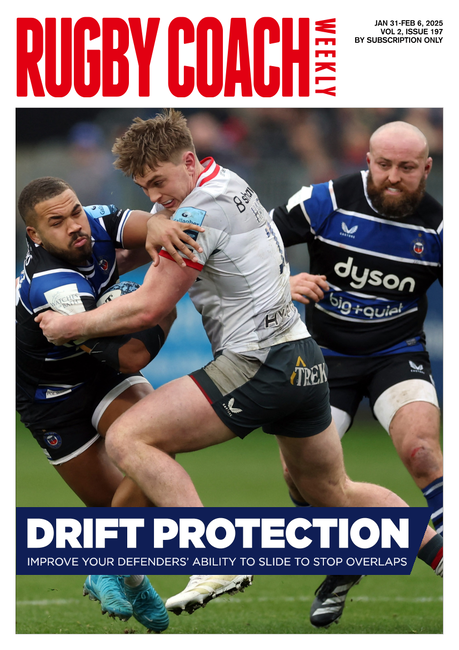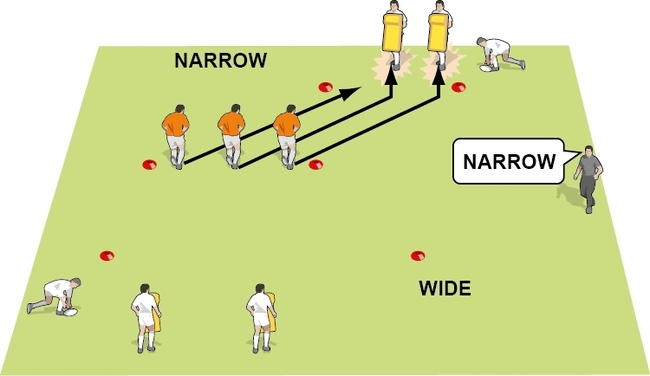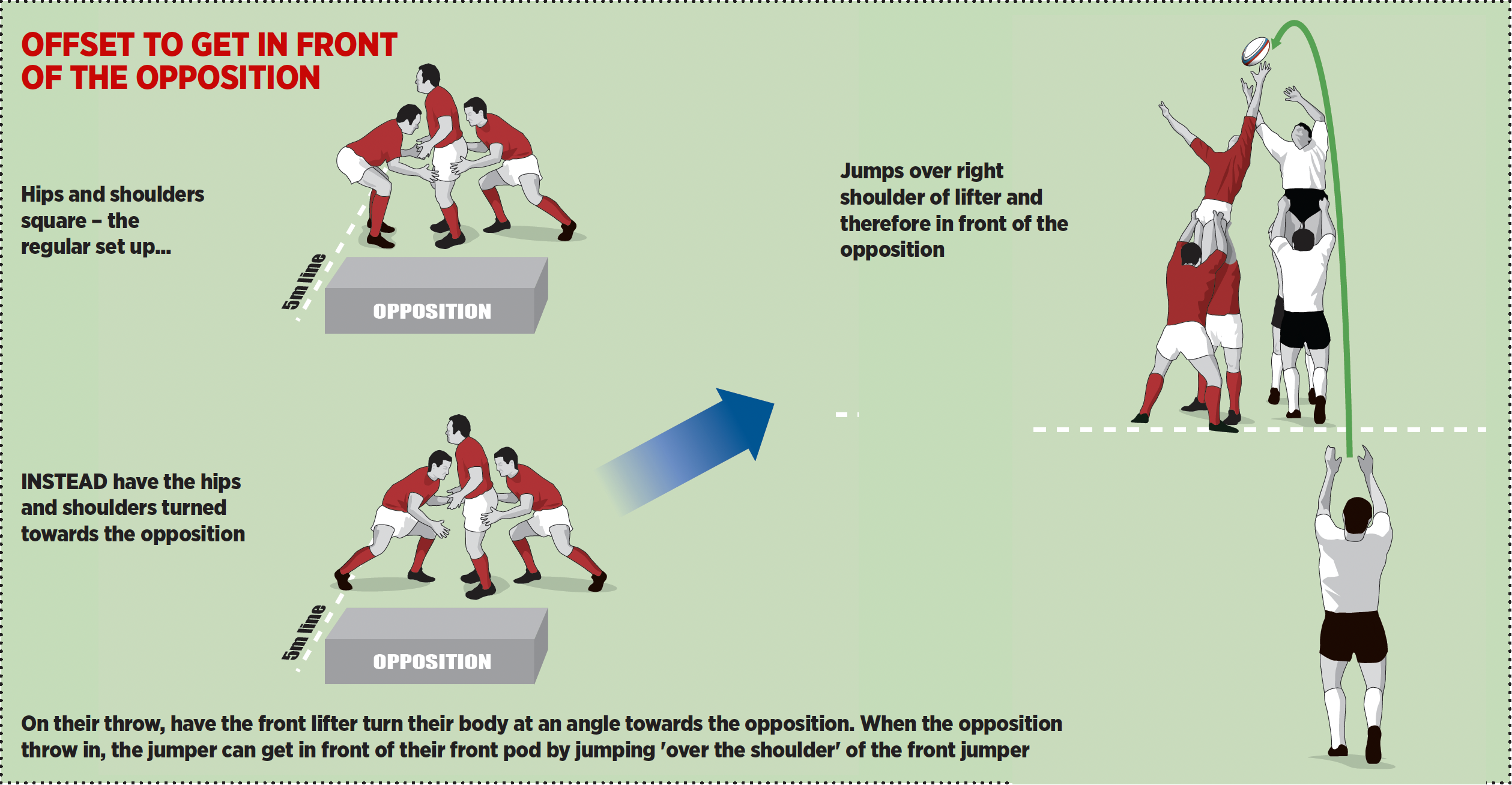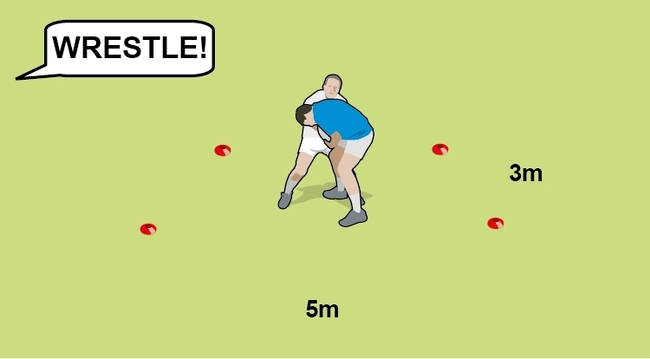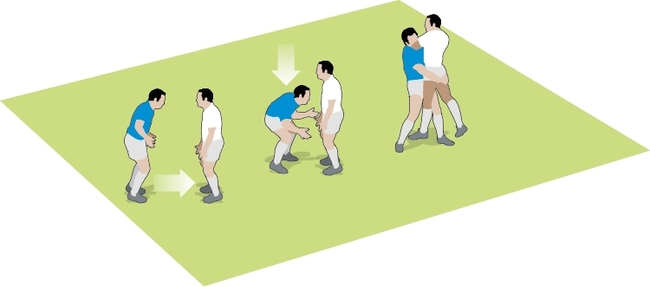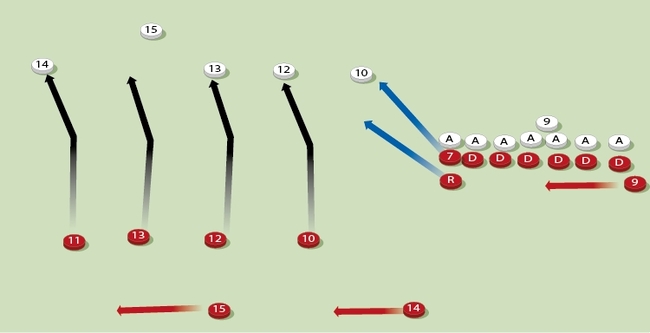The 8 basics of ruck defence

Shut off the easy yards for opposition sides attacking from the ruck. Ensure your players are in the right place, at the right time and making the difference.
1. MESS WITH THEIR BALL
Slow their ball placement legally, so your ruck defence can get into place. The tackler gets up over the ball by twisting so they are on top of the ball carrier. They will then have to roll away promptly though.
The next defender aims beyond the ball rather than make a poor effort to grab the ball. If they can be in a strong position to challenge for the ball, they should go for it.
2. COUNTER-RUCK IF THEY ARE ISOLATED
Opponents may form a ruck with small players or fewer numbers because they are isolated (like from a kick ahead) so flood numbers into the ruck.
3. SET YOUR PILLARS
Posts, guards, or pillars. Whatever you call them, it is essential there is a defender on each side of the ruck. They set the defensive line.
4. PUMP THE HEART
The pillars are the heart of the defence and the rest of the defenders fill out from there. Make sure they are onside and matching up depending on the attacking shape.
5. FIRST MAN PICK, SECOND MAN 9
The closest player to the ruck covers a pick-and-go, the second defender covers the 9.
6. CHOP CLOSE TO THE LINE
When you are close to your own line, your players get very low and chop the ball carrier down quickly. Don’t worry about dominating the tackle. Just stop their momentum.
7. MAN IN THE BOOT
Make sure that there is a player behind the ruck organising. Normally the scrum half, they work out where the defence needs more resources.
8. FAST OFF, KEEP SOLID
The first three players on each side of the ruck must come forward fast and together. They should move forward and not drift out until the ball is well away.
Newsletter Sign Up
Coaches Testimonials

Gerald Kearney, Downtown Las Vegas Soccer Club

Paul Butler, Florida, USA

Rick Shields, Springboro, USA

Tony Green, Pierrefonds Titans, Quebec, Canada
Subscribe Today
Be a more effective, more successful rugby coach
In a recent survey 89% of subscribers said Rugby Coach Weekly makes them more confident, 91% said Rugby Coach Weekly makes them a more effective coach and 93% said Rugby Coach Weekly makes them more inspired.
Get Weekly Inspiration
All the latest techniques and approaches
Rugby Coach Weekly offers proven and easy to use rugby drills, coaching sessions, practice plans, small-sided games, warm-ups, training tips and advice.
We've been at the cutting edge of rugby coaching since we launched in 2005, creating resources for the grassroots youth coach, following best practice from around the world and insights from the professional game.


